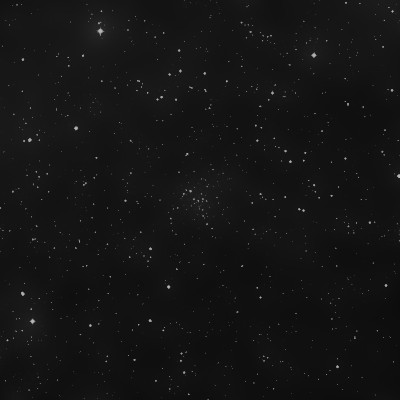
John Herschel discovered NGC 103 = h20 on 5 Oct 1829 and recorded, "pS, p compressed cl; 3' diam; st 11...18m in 2 or 3 principal branches. If this be VI 35 [NGC 136], there must be a mistake in my father's obs or mine of 6m in RA." Herschel's conjecture was wrong -[NGC 136 is a much smaller cluster, 6 minutes of RA east.
The first observation was made by William Herschel on 26 Nov 1788 (sweep 887). He noted "clustering, small stars, considerable rich", but didn't assign it a discovery number. He mentioned again, though, in his 1817 paper "Astronomical observations and experiments tending to investigate the local arrangement of the celestial bodies in space, and to determine the extent and conditions of the Milky Way."
300/350mm - 13.1" (10/20/84): 20 faint stars over unresolved haze, very elongated SSW-NNE. Two mag 11 stars are at the north end.
600/800mm - 24" (1/4/14): at 125x and 260x, ~40 stars were resolved mag 12-15, mostly within or near a distinctive 3.3' string oriented SSW-NNE. Two brighter mag 11.8/12.3 stars lie at the N end of the string, just detached from the richest clump of stars near the center of the cluster. Another sparser string of stars is parallel and just 1' W of the main string. A string of stars oriented N-S is detached to the SE of the main string. Observed with a 4 day moon up.
Notes by Steve Gottlieb